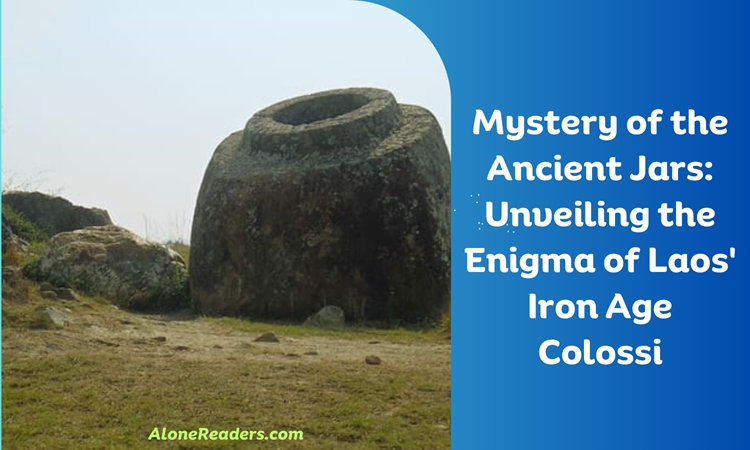
In the mountainous expanse of northern Laos lies one of archaeology's most perplexing enigmas: the Plain of Jars. This terrain is stippled with thousands of stone jars, vast and ancient, their origins and purposes shrouded in the mists of time. These jars, weathered and clad in a tapestry of lichen, emerge from the landscape like silent sentinels of a long-forgotten past.
Crafted primarily from sandstone, these colossal jars vary in size, with some reaching a staggering height of nearly 10 feet and weighing several tons. They are found in clusters ranging from a solitary jar to gatherings of 400, painting a picture of deliberate arrangement whose rationale evades modern understanding. The sheer size and number of these jars evoke awe and curiosity, compelling us to delve into their mysterious origins.
Legend, as often is the case with ancient artifacts, weaves a tale of giants who roamed these lands. In these stories, these mythical beings used the jars as wine glasses, a fanciful interpretation that imbues the landscape with a sense of mythic grandeur. However, the romanticism of folklore contrasts sharply with the pragmatic hypotheses of archaeologists. Many experts posit that these jars were used as funerary urns, a theory that aligns with similar practices observed in other ancient cultures. Yet, much remains unknown about their true purpose, the methods employed in their transportation and placement, and the details of the civilization that crafted them.
Recent research has shed some light on the age of these artifacts, dating at least some of the stone jars to as early as 1240 B.C. This revelation places them in the Iron Age, a period marked by significant advancements in tool-making and societal structures. Interestingly, these jars are far older than the human remains found in proximity, suggesting a continuity of use or cultural significance that spanned generations. The disparity in ages between the jars and the nearby human remains adds layers of complexity to their story, hinting at a long-standing tradition or ritual that persisted through time.
Complicating the study of these jars is a more recent and somber chapter in their history. The fields where many of these jars stand bear the scars of the Vietnam War, specifically a massive U.S. bombing campaign. This has left a dangerous legacy of unexploded munitions, rendering significant portions of the area hazardous for detailed study. This presents a formidable obstacle for archaeologists and historians, as it limits access to these artifacts and, by extension, the secrets they hold.
The presence of these unexploded munitions also serves as a stark reminder of the intersection between ancient history and modern conflict. It highlights how the remnants of war can continue to impact cultural heritage and impede the understanding of our past. The Plain of Jars, therefore, stands not only as a testament to an ancient civilization but also as a symbol of the enduring consequences of war.
Despite these challenges, the Plain of Jars continues to be a focal point of archaeological interest and research. Efforts are underway to safely navigate the dangers posed by unexploded ordnance, allowing for a more thorough examination of the jars and their surroundings. This painstaking work is critical in piecing together the puzzle of the jars' origins and uses.
In conclusion, the Plain of Jars is a site that captivates the imagination and challenges our understanding of the past. It is a place where history and legend intertwine, where the remnants of an ancient civilization lie in the shadow of modern warfare's legacy. As research continues, each discovery brings us closer to unraveling the mysteries of these stone colossi, offering glimpses into a past that is both profoundly alien and intimately connected to the human story. In the silent watchfulness of these jars, there are stories waiting to be told, secrets waiting to be uncovered, and a history waiting to be understood.